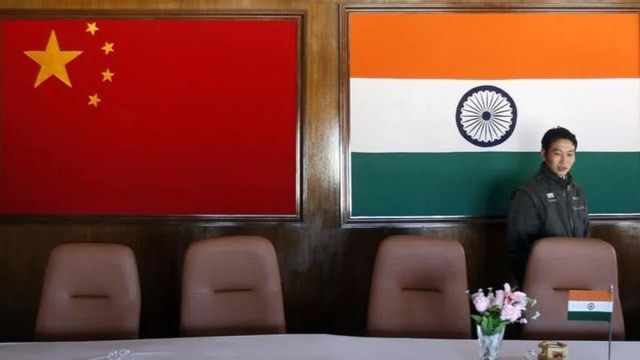
The 50 per cent tariff shock on Indian exports to the United States has rattled exporters and policymakers alike. Garment manufacturers are scouting for alternative markets, while jewellery exporters are checking if their orders still stand. Meanwhile, the government plans credit measures to support SMEs and exporters who now potentially face a loss of their largest market.
India now finds itself in a strategic bind. These developments come barely weeks before Prime Minister Narendra Modi’s maiden visit to China since the Galwan clashes of 2020. The outreach aims to stabilise supply chains and secure critical technologies. Yet it coincides with Washington, India’s key trading partner, tightening the screws over Delhi’s Russia links, leaving India little room to manoeuvre.
This is not dissimilar to the position the European Union finds itself in, vis-à-vis China and the United States. A summit marking 50 years of diplomatic ties in July ended in disappointment for Brussels. EU leaders raised concerns over China subsidising its EVs, market access issues, industrial overcapacity, and Beijing’s support for Russia. On the other hand, President Xi Jinping warned against EU interference and criticised its de-risking policies.
The EU-China diplomatic freeze has lessons for India. Only months earlier, with Donald Trump threatening sweeping tariffs on both the EU and China, Brussels and Beijing looked poised for closer ties. But that changed quickly when Trump paused tariffs on Chinese goods and Washington and Beijing agreed to resume cooperation on AI and critical minerals. The promise of renewed access to the US market dulled Beijing’s appetite for compromise with Europe.
Once China secured breathing space with Washington, it turned up the pressure on Brussels. It implemented anti-dumping tariffs on European brandy and expanded procurement restrictions on European medical equipment. The Chinese Commerce Minister called for the removal of EU sanctions on two Chinese banks alleged to have assisted Russia. Chinese export controls on rare earths were strengthened, and data localisation requirements affecting EU cloud and fintech companies were enforced.
The EU and the US could have coordinated their leverage against China. Instead, the EU is under pressure from both sides, following the signing of a trade deal that imposes a 15 per cent tariff on its exports to the US.
After years of border tensions and curbs on Chinese investment, New Delhi appears to be testing a modest thaw in relations. External Affairs Minister S Jaishankar’s visit to Beijing in July coincided with the reopening of the Kailash Mansarovar Yatra, the resumption of direct flights, and the reinstatement of tourist visas for Chinese citizens.
This revival is driven less by breakthroughs on the border and more by economic reality. The bilateral trade deficit reached a record $99.2 billion in FY25. Imports of solar components, lithium-ion batteries, electronics, and critical intermediaries surged by more than 25 per cent year-on-year. China’s dominance in key sectors, such as EV components, green tech, APIs, and telecom equipment, keeps it entrenched in India’s efforts to develop its own ecosystem.
India is also exploring ways to ease curbs on Chinese investment, particularly in high-tech sectors. But this re-engagement is happening in the context of unresolved strategic issues. Despite an agreement last October, de-escalation along the LAC remains incomplete. Confidence-building measures are still minimal. And public sentiment remains wary.
In this context, China may interpret India’s opening as a sign of constraint rather than strength. If Beijing could pivot so quickly against the EU once Washington reopened its doors, it could just as easily do the same with India.
India’s best opportunity to avoid Europe’s fate lies in direct negotiations with Chinese firms, ensuring a durable channel of communication, even when geopolitics turn cold. This does not necessarily mean filling out the calendar with high-level dialogues or offering joint ventures with Indian firms, to which Chinese companies may not freely transfer the latest technologies.
Instead, India should identify critical supply chains integral to achieving its goals of economic growth, such as EV batteries, displays, EMS and connectors, solar wafers, precision machinery, and tooling. Subsequently, it should engage in dialogue with Chinese brands that have a strong global presence and established connections with upstream players in these fields. With strategic plans spanning two to three decades, these organisations are likely to assess commercial opportunities in India pragmatically and navigate political considerations in both countries as needed.
India needs to establish a dedicated, multi-agency team to engage directly with key Chinese firms essential to its industrial goals. This team should comprise supply chain experts, Indian OEMs, state government representatives, and embassy staff, rather than general-purpose investment promotion bodies. Their focus should be on building strong, ongoing relationships with 25-30 major companies through private discussions and practical collaboration, rather than public initiatives.
Currently, there is no coordinated outreach with these firms, and policies regarding Chinese companies in India are so unclear that only intermediaries can profit. To attract long-term investment, India needs to offer transparent and predictable guidelines that specify permitted activities, sectors, compliance requirements, and incentives. This clarity will encourage companies to invest, localise, and train for the future, resulting in knowledge and technology transfer. Not because it is mandated, but because companies will need to build for the long term.
The Chinese establishment is likely to continue viewing India primarily from a strategic perspective. But when its firms and their shareholders stand to lose money by pulling out, the resistance to weaponising market access or regulatory tools will come from within. In a relationship marked by asymmetry, impassive commercial engagement may be India’s strongest safeguard.
The writer is Director, Geopolitics and Policy, at Koan Advisory Group, New Delhi. These are his personal views